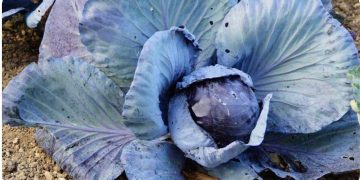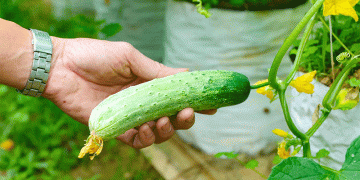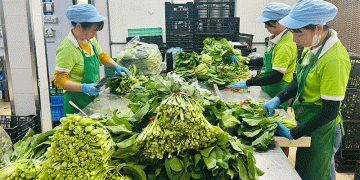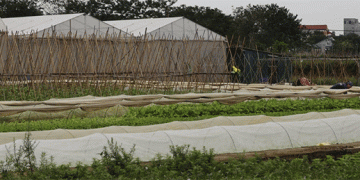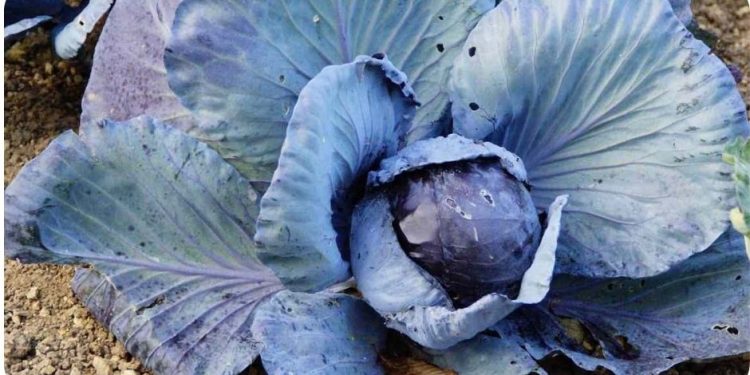Growing Red Cabbage Plants
Hello friends, today we are here with a new topic called “Growing Red Cabbage”. Red Cabbage is also called purple cabbage, and it belongs to the Brassicaceae family. Red Cabbage is more peppery in taste compared to the usual cabbage due to the presence of anthocyanin pigments. The color of the cabbage is due to the presence of anthocyanin. Also, it makes beautiful stews, salads, and pickles and is a great way to add cancer-preventing carotenoids to your diet. The plant leaves are tightly arranged to form a headed cabbage, having a flat-topped, cylindrical, spherical, or oval shape. They have even leaves, with a rounded shape and average size. The Red Cabbage plant bears a compact head of red leaves. The Red Cabbage plant bears flower spikes easily in cold weather conditions, the reason why the use of tunnels in early spring plantations is recommended.
Red Cabbage is very similar to regular, green cabbage, but there are still some distinct differences that you may need to know about. It contains about 10 times more vitamin A compared to green cabbage, and also it has twice the amount of iron. It stores better than green cabbage and is a low-maintenance vegetable you can plant. It is a beautiful form of one of the oldest-known vegetable plants. The flavor is like that of green cabbage and excellent boiled or stir-fried.
The Red Cabbage is a kind of cabbage and its leaves are colored dark red/purple. Though, the plant changes its color according to the soil pH value, due to a pigment belonging to anthocyanins. The Red Cabbage leaves grow more reddish in acidic soils, they will grow purple in neutral soils, while an alkaline soil will produce rather greenish-yellow colored Cabbages.
Growing Red Cabbage plants is not difficult at all and it prefers cooler temperatures and partial shade. This hardy leafy vegetable plant is susceptible to pests though, so make sure to always keep an eye on it. If planted correctly, you can get 2 crops in one year that means one in the spring and another one in the fall. Growing Red Cabbage plants is very similar to growing green cabbage. You’ll first need to start seeds indoors, so you will need a tray, some Red Cabbage seeds, and starting soil.
A Step-by-Step Guide to Growing Red Cabbage, Planting Tips, Ideas, Techniques, and Secrets
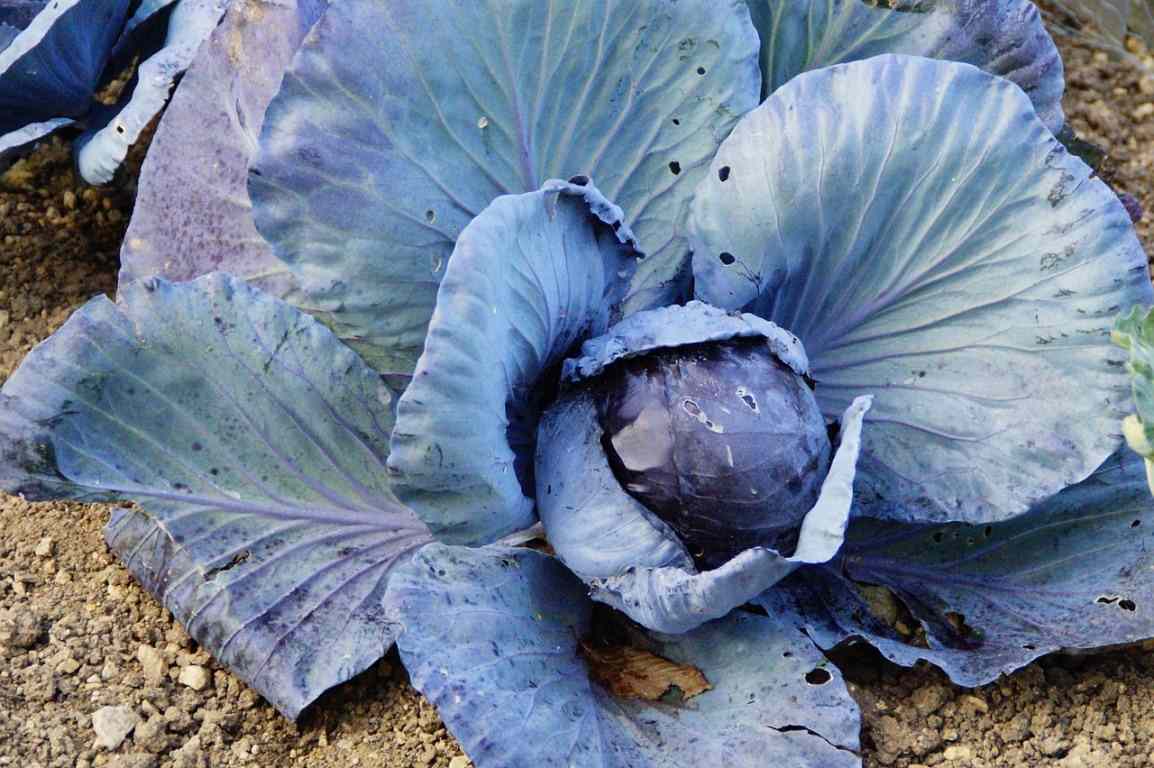
Quick Guide to Growing Red Cabbage Plants
- Name – Red Cabbage
- Scientific Name – Brassica oleracea
- Origin – Origins are strictly European
- Shapes – Standard round to flattened or pointed
- Taste – Faintly peppery taste
- Plant Growth Habit – Biennial plant but grown as an annual vegetable crop
- Growing Climate – Easy to grow in cool weather
- Soil – Well-drained and nutrient-rich soil that’s high in organic matter
- Light – Partial sunlight (summer), and full sunlight (winter)
- Seasonal Information – all seasons
- Head size – 3 pounds
- Matures – 75 days
- Plant spacing – 24 inches apart
- Plant size – About 18 inches tall and 24 inches wide
Different Types of Red Cabbage Varieties
- ‘Ruby Ball’ variety is compact and probably the most flavorful Red Cabbage.
- ‘Mammoth Red Rock’ variety is large and stores well.
- ‘Scarlet O’Hara’ is a Japanese hybrid.
- ‘Ruby Perfection’ Red Cabbage variety noted for its beauty.
- ‘Lasso’ and ‘Red Acre’ varieties are two open-pollinated Red Cabbages.
Soil Requirements for Growing Red Cabbage Plants
For growing Red Cabbage plants, provide well-drained, nutrient-rich soil that’s high in organic matter. Red Cabbage can be grown in different kinds of soils ranging from sandy loam to clay soil. But make sure that the soil pH level is maintained at 6.5 to 7 to get a good yield. Soil rich in organic matter with good drainage is all that your Red Cabbage plants need to thrive.
When and Where to Grow Red Cabbage Plants
Generally, Red Cabbages are sown from February to mid-April for transplanting from April to early June. It does well in humid areas with well-drained fertile soils. The topography of the area must be flat or gently sloping to avoid seed displacement by water when planting. This applies where production is commercial and it should be grown in the sun.
Growing Red Cabbage from Seeds or Scraps
Cabbage can be planted from seeds or scraps. Quality Red Cabbage seeds are available in any agricultural seed company or store. Though, scraps are the cabbage leftovers that are attached to the root.
When growing Red Cabbage indoors from scraps;
- Simply place the leftover base from where the plant leaves emerge in a shallow container filled with water.
- Place the container on the balcony for easier access to light.
- The roots and leaves should start sprouting in about 3 to 4 days.
- After that, change the water every few days to ensure there is no drying.
- You can transplant the Red Cabbage to your garden; a container filled with soil or just let it grow in the water as long as you continue to change the water every so often.
When Red Cabbage growing from seed either for subsistence or for commercial purposes;
- Seeds are grown indoors first before being transplanted. It is recommended to start Red Cabbage seeds indoors about 4 weeks before the last frost. Sow seeds in containers that allow for the movement of water through the bottom of a cell.
- Seedlings must be ready to transplant once they are about 2 to 4 inches tall and have sprouted their first leaves. The seedlings must be hardened off to slow plant growth so that they can withstand hard conditions where they are to be transplanted. Once the seedlings grow to about 2 inches tall and developed their first leaves, they can be hardened off and moved outside for transplanting.
- When transplanting, space the seedlings about 12 to 26 inches apart to allow for growth. Ensure you weed, and take measures to control pests and diseases that can attack your crops, do this until they mature. Regularly water your plants as Red Cabbages require a lot of water.
- Red Cabbage prefers climates that remain moist and cool for its vegetative growth stage. They will require watering often but are otherwise low-maintenance plants.
Process of Planting Red Cabbage
- Once seedlings have been established and they have grown 2 to 3 true leaves, it’s time to transplant your Red Cabbage.
- Do these 2 to 3 weeks before the last expected frost date. Transplant on a cloudy day so the cabbage seedling isn’t exposed to intense sunlight.
- Choose a good spot in your garden or raised beds are ideal, but not necessary.
- An area with partial shade is best since the Red Cabbage plant does love the sun, but cannot stand too much heat.
- Also, you can plant Red Cabbage directly into pots so you can move the pots around.
- Plant your Red Cabbage seedling into rich soil and then scatter some organic material into the soil. Aged manure or compost will work well.
- Make sure that the soil is well-draining as Red Cabbage cannot tolerate wet soil.
- Plant about 12 to 24 inches apart in rows.
- Add fertilizer once the plant has been stabilized and you can grow cabbage alongside cucumbers and beans.
- Red Cabbage is closely related to broccoli and cauliflower, and best not to plant them together as they are all heavy feeders and will compete for the nutrients.
- Also, it is best not to plant cabbage alongside strawberries and tomatoes.
Water Requirements for Growing Red Cabbage Plants
Keep soil consistently moist throughout the growing season. Typically, established Red Cabbage plants need 1 to 1.5 inches of water per week supplied through rainfall or irrigation. Then, add mulch to help maintain consistent soil moisture.
Tips for Growing Red Cabbage Plants
In case if you miss this: Indoor Vegetable Farming.
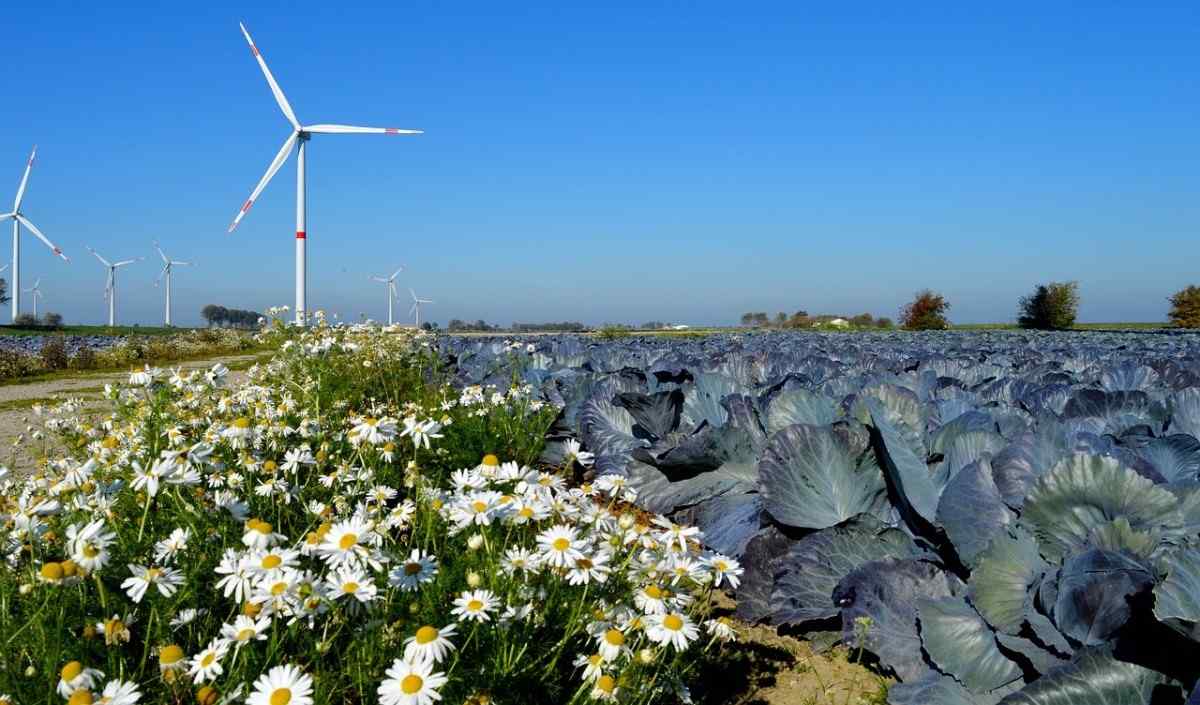
- Red Cabbage is a relatively easy crop to grow and doesn’t require much pre-planning.
- Red Cabbage requires regular watering. The best way to water your plants by using a watering can or a sprinkler system. And, make sure that the soil remains moist, especially when the plants are soaking up sunlight.
- By using a sharp knife to harvest the cabbage heads for consumption. This will ensure that the plant roots do not get damaged.
- Red Cabbage demands even moisture to produce good heads. Then, mulch with compost finely ground leaves, or finely ground bark to keep the soil cool and moist and to keep down weeds.
- The best method to avoid problems is to keep your cabbage healthy and keep your garden clean.
- Then, prepare the soil in advance by mixing in aged manure and compost.
- The soil must be well-draining and roots that stand in water cause heads to split or rot.
- Red Cabbage can be stored in the refrigerator for up to 2 weeks, wrapped lightly in plastic. Make sure it is dry before storing.
Caring for your Red Cabbage Plants
Keep the soil around the Red Cabbage weed-free. Carefully remove any yellow color leaves in Red Cabbage plants or those badly damaged by the caterpillar. Then, keep an eye on the plants over the autumn and winter season, firming the plants down if lifted by frost or pulling some soil up around the stems to help prevent wind rock as needed. Though, do not allow the plants to dry out as this will result in plant bolting. During a prolonged spell without rain (week or more) you must water gently but deeply once a week. As a rough rule of thumb apply approximately 10 liters per meter squared of soil area. Carry out this watering in the morning and try to avoid splashing the plant leaves, watering the soil instead.
At about the 4th or 5th week after seed germination and while plants are growing strongly you can apply a second application of a well-balanced fertilizer. Although not essential, a further scattering of fish blood and bone can increase the vegetable vigor and make them less susceptible to plant ills. Once scattered the fertilizer must be lightly scratched into the surface of the soil followed by gentle but deep watering of the soil.
Problems for Growing Red Cabbage Plants
Why Red Cabbage Won’t Form
- There are a few cultural and temperature elements that can be the reason for cabbage not growing ahead.
- Early damage by cutworms could prevent the plant from heading.
- Poor cultivation or planting of the seedlings when temperature levels are 27°C or more will also affect cabbage head formation.
Splitting
This is one of the major problems that you can face while growing Red Cabbage. Splitting is more common in quick-growing and early-season plant varieties. Some reasons for Red Cabbage would split are overwatering, heavy rains, and drought, etc. You can avoid cabbage head-splitting by providing mulch to your plants which will retain moisture in the soil.
Inadequate moisture levels
Some of the common Red Cabbage growing problems result from under or overwatering. Red Cabbage plants prefer consistently moist, but not soggy soil. Though, the main signs of inadequate moisture levels include plants that don’t form heads, plants that rot, or cabbage heads that split upon maturity. Supply water during dry spells and plant Red Cabbage in well-draining soil to correct this problem.
Wilted and Yellow Leaves
Yellow leaves mean many things, from overwatering to Clubroot, a common disease that affects cabbage. The most obvious symptoms of clubroot are yellowing and wilting leaves. Avoid this problem by keeping the plant healthy and your garden free of insect pests, weeds, and debris. Also, don’t plant Red Cabbages or other related vegetables in the same spot year after year.
Bolting and flowering
If cabbage sends up a flower stalk instead of forming ahead it is called bolting. Usually, bolting occurs in cabbage when temperatures get too hot. When the ground temperature goes above a certain temperature, the plant will produce flowers and seeds rapidly and abandon leaf development, trying to quickly produce the next generation of seed. Once a Red Cabbage plant bolts, ahead will not form but you can still eat the leaves. Harvest the Red Cabbage as soon as possible, or they’ll start to taste bitter.
Improper nutrients
Red Cabbage plants are heavy feeders and require adequate amounts of nitrogen for leaf growth. And, too little boron in the soil causes Red Cabbage leaves to taste bitter. Then, these issues can be addressed by having the garden soil tested and amended as needed. Incorporate compost into the garden yearly and then feed cabbage throughout the growing season with a balanced (10-10-10) fertilizer or compost tea. As Red Cabbage plants begin to set heads, to prevent cracking by reducing nitrogen supplementation.
Companion Crops for Red Cabbage Plants
Companion cropping keeps plants healthy and also free from insect pests such as slugs, flea beetles, and aphids. There are mainly three categories of crops that are beneficial to cabbages;
- Root vegetables like onions and beetroots.
- Aromatic crops such as peppermint and chamomile.
- Garden edging such as yarrow and marigold.
Red Cabbage can also be planted alongside beans or cucumbers because these crops do not require the same nutrients as cabbage. Some plants like tomatoes, cauliflower, broccoli, or strawberries should not be planted along with cabbage if you hope to get good produce.
Pests and Diseases in Growing Red Cabbage Plants
Common issues – Watch out for some problems like cabbage loopers, cabbage worms, cabbage root maggots, slugs, aphids, and flea beetles. Disease-wise, blackleg, black rot, and clubroot, and yellows can occur.
Plant dill near your Red Cabbage plants to protect them from imported cabbage worms. Then, this will attract beneficial wasps that will kill the cabbage worms and other pests.
Pests are a common occurrence in all agricultural produce. Foliage-feeding caterpillars, cabbage webworms, aphids, flea beetles, and cutworms are just but a few of the common pests known to attack the Red Cabbage. Other pests can be hand-picked by using biological pest control.
Plant diseases like black rot, fusarium wilt, sclerotinia rot, and tip burn are common in cabbages. These diseases can be controlled by keeping the seedbed dry, planting resistant varieties, and spacing the plants well for proper aeration.
When And How to Harvest Red Cabbage
You may also check this: Weed Management In Organic Farming.
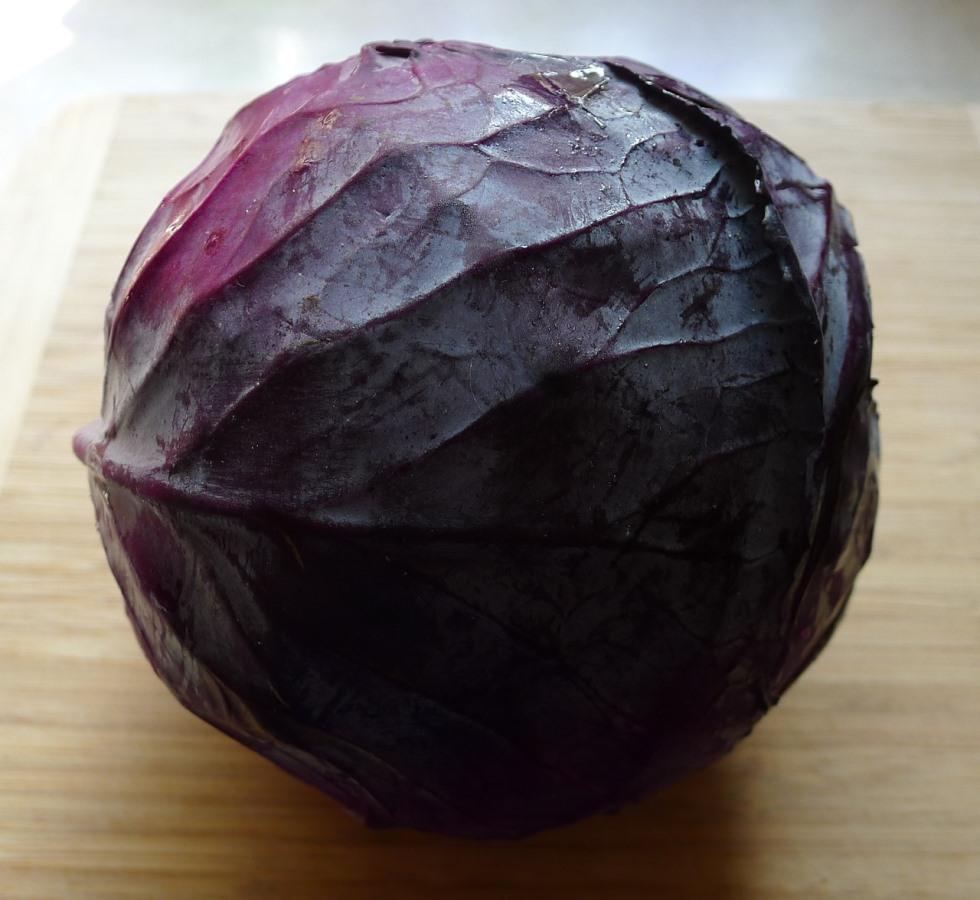
- Harvest cabbage heads when they’re firm and feel solid. Immediately harvest any heads that crack or split. Cut heads from the base of the plant.
- Generally, Red Cabbage is ready for harvest once they are big enough and that have purple color.
- Simply pull from the ground gently or use a sharp knife to cut at the bottom and take approximately 70 days from planting to harvest.
- To get two crops, cut the cabbage head off the plant and then leave the outer leaves and root in the soil.
- This will encourage the plant to grow new heads and pinch them off until only 3 or 4 smaller heads remain.
- Red Cabbage takes 70 days to mature. At this stage, it has leaves that are deep purple.
- Red Cabbage harvest only during the coolest time of the day, especially in the morning.
- You can harvest about 3 or 4 smaller heads from this crop. You could harvest by uprooting the whole cabbage as it has shallow fibrous roots therefore easy to pull off the ground.
- Cabbage heads can be stored in a refrigerator for up to 2 weeks.
- Usually, Red Cabbage is smaller and denser than the heads of green cabbage. The flavor of Red Cabbage is peppery and it is very susceptible to color change.
Commonly Asked Questions about Growing Red Cabbage Plants
Is Red Cabbage better than Green?
Both red and green cabbage is good for health, while Red Cabbage packs a more powerful nutritional profile and more overall antioxidants. For example, Red Cabbage contains about 85% of the daily vitamin C our bodies need, while the green version provides 47%.
How much time does it take to grow Red Cabbage?
Red Cabbage is ready for harvest once they are big enough and have that deep and purple color. Simply pull from the ground gently or by using a sharp knife to cut at the bottom. Then, it will take approximately 70 days from planting to harvest.
Does Cabbage need full sun?
Cabbages need full sun at least 6 to 8 hours of direct sunlight per day.
How much space does Red Cabbage want to grow?
Depending on the variety, space plants about 18 to 24 inches apart.
Why are cabbage plants not forming ahead?
Excess nitrogen can cause the plant to form more leaves that are loosely held and do not make ahead. Early damage by cutworms can prevent the plant from heading. Club rot in soggy alkaline soils is another reason for cabbage won’t form ahead.
Why are my cabbage plants dying?
The major cause of cabbage wilt is improper watering. While it stands to reason that a plant that does not get enough water will eventually wilt, improper and inconsistent watering can also cause the cabbage to wilt.
